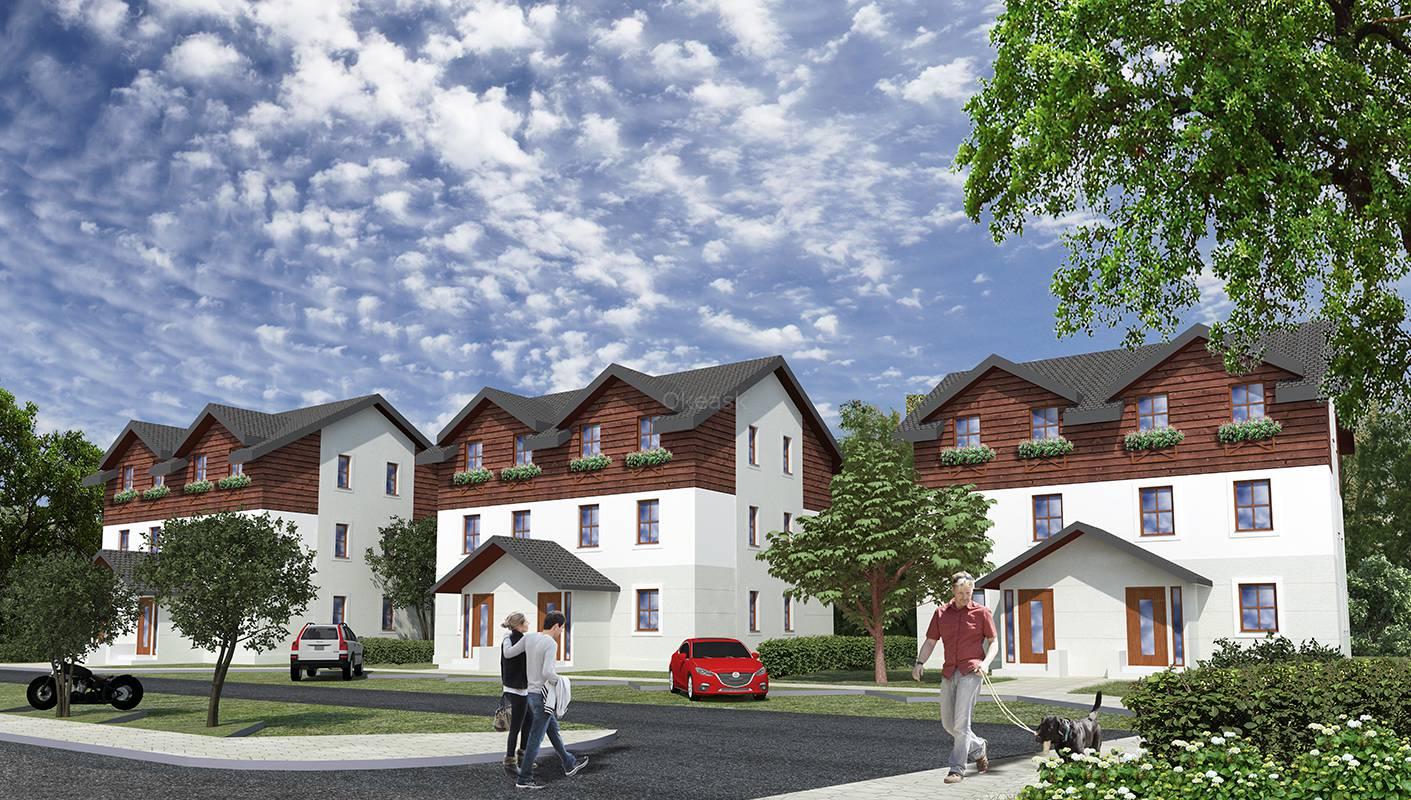Residential real estate market in Poland in the II quarter of 2021

Residential real estate market in Poland in the II quarter of 2021
The housing market continued to be highly active in the second quarter of 2021. The number of housing contracts increased slightly compared to the first quarter of this year, and annual sales are almost back to 2017-2019 levels.
In the second quarter of 2021, a record number of apartments were again put into operation in Poland, which was the result of the activity of developers in previous years. The costs of housing construction (materials and, especially, labor) have risen again. Land prices continued to rise due to high demand from developers starting new investments. On an annualized basis, there was an increase in the average price of transactions for 1 sq. m. m. of housing both in the primary and secondary markets.
In the second quarter of 2021, house prices (sqm) increased in most of the analyzed cities (see table). Primary Market Transaction Prices (RPT) rose due to larger sales of better located and more expensive apartments, especially in Krakow, Gdansk and Gdynia. Rising prices for apartments in primary markets (mostly developer standard, i.e. do-it-yourself finishing and deferred sale) coupled with high demand are also causing strong buyer demand for the cheaper secondary market, where the apartment is usually ready for sale. Growth in offer prices (RWO) and deals/transaction prices (RWT) was also observed in the secondary market in all groups of cities.
Table. Dynamics of prices for apartments (sq. m) in the largest cities of Poland in the 2nd quarter of 2021
|
|
Primary Market Offer Growth Index (RPO) |
Index of growth of transactions (transactions) in the primary market (RPT) |
Secondary Market Supply Growth Index (RWO) |
Index of growth of transactions (transactions) in the secondary market (RWT) |
|
Gdansk |
-3,5% |
4,7% |
2,8% |
-2,9% |
|
Gdynia |
2,2% |
4,7% |
4,3% |
5,5% |
|
Krakow |
4,2% |
6,2% |
3,4% |
8,8% |
|
Lodz |
8,1% |
2,7% |
1,8% |
6,7% |
|
Poznan |
3,3% |
-0,4% |
2,4% |
-0,5% |
|
Wroclaw |
3,6% |
1,8% |
3,1% |
5,6% |
|
Warsaw |
3,6% |
0,1% |
2,1% |
1,2% |
|
6 largest cities |
3,5% |
3,4% |
2,9% |
4,3% |
|
10 major cities |
3,8% |
3,7% |
2,1% |
3,6% |
Dynamics of average, transactional rental rates for 1 sq. m. m of housing (excluding fees for services) remained at the level of the previous quarter in all groups of cities. Despite a significant decrease in rental income, there was no mass listing of premises for sale. Investors continued to seek security for their real estate investment and, to a lesser extent, expected an attractive rate of return. Despite the growing interest in renting, large cities still have a large number of housing offers in the long-term rental markets, including those purchased for investment purposes. This may lead to lower rental rates in the future.
Quarterly sales of housing contracts in Poland's 6 largest primary markets slightly increased compared to the previous quarter and amounted to about 19.5 thousand. At the same time, 15.8 thousand contracts for the construction of apartments were put up for sale, i.е. about 14.1% more. The supply of unsold contracts for the construction of apartments put on the market decreased compared to the previous quarter by about 11.0 thousand premises and amounted to about 37.8 thousand at the end of the period. The number of contracts with apartments conditionally referred to as “ready to move in” in the offer for sale in 6 cities decreased to 0.9 thousand compared to the previous quarter. The index of the terms of implementation of housing construction contracts in the primary market in 6 cities decreased to 2.2 compared to 3.1 in the previous quarter. These data indicate some tightening of supply in relation to demand.
The indicator of the estimated affordability of apartments in large cities (based on the average monthly salary in the business sector) slightly decreased in the quarter under review, but was still above the minimum recorded in Q3 2007. The indicator of the estimated maximum affordable housing loan also slightly decreased for the average household , as well as an indicator of the estimated affordability of a home loan. Rising housing prices have been the main driver of the current decline in affordability.
The maximum available housing loan in this market is an indicator expressed in thousands of PLN, taking into account the bank's lending requirements and loan parameters (i.e. interest rate, repayment period of 25 years, minimum wage as minimum income after payment of loan installments ). The assessment does not take into account changes in the credit policy of banks.
Credit availability is an indicator that determines the number of square meters of an apartment that can be purchased using a housing loan with an average monthly salary in the enterprise sector in a given market (GUS), taking into account the bank's loan requirements and loan parameters.
The average long-term rental rates in the 7 largest cities (Warsaw and 6 cities) indicated a lower level of the apartment rental profitability index. However, housing investments (excluding transaction costs) were competitive in terms of interest rates on bank deposits or investments in 10-year Treasury bonds.
In the second quarter of 2021, the volume of payments on new housing loans in Poland was higher than the issuance of loans for the same period in 2020. The value of new home loan agreements for households (excluding renegotiated contracts) amounted to PLN 22.2 billion, which is about PLN 4.9 billion (27.9%) more than in the previous quarter and about PLN 9.2 billion PLN (71.0%) compared to the second quarter of 2020. The situation on the credit market shows that banks have lowered the standards for issuing home loans, as well as lowered the requirements for the own share of the borrower compared to the previous quarter. At the same time, banks increased margins on high-risk loans.
The estimated rate of return on equity of developers on investment projects slightly increased compared to the previous quarter and amounted to about 23%. This was the result of an increase in transaction prices, which more than covered the increase in costs of home producers. In the first half of 2021, the number of bankruptcies in the construction industry increased from 51 to 109, and in real estate from 9 to 48, respectively.
In the 1st quarter of 2021, a historically large number of apartments was put into operation in Poland - 52.1 thousand apartments, i.e. 9.6% more. Basically, apartments for sale and rent (60%) and individual houses (40%) were rented out. The number of apartments under construction was also historically high, 70.6% higher than in the second quarter of 2020. Here, too, apartments for sale and rent (60%) and detached houses (40%) dominated.
It should be added that the number of apartments started in construction increased in Warsaw (the share in the number of completed apartments was 7% compared to 4% in February 2020), as well as in six large cities (14% compared to 12% in February 2020). ), with a decreasing share in the rest of Poland (79% share compared to 84% in February 2020).
In the second quarter of 2021, banks and credit unions provided about 70.8 thousand housing loans in the amount of approximately PLN 22.7 billion (in the second quarter of 2020, PLN 48.3 thousand and PLN 14.1 billion respectively). The negative growth in the provision of housing loans, recorded in the 2nd quarter of 2021, affected all groups of loans numerically, while all groups of loans increased in value terms. In the value structure of the housing loan portfolio, the share of loans over PLN 350 thousand increased from 48.7% in the second quarter of 2020 to 56.4% in the second quarter of 2021.
Compared to the previous quarter, the share of housing loans with maturities of 15 years (6.8%) and 15-35 years (25.4%) increased, while the share of other loans decreased. At the end of the second quarter of 2021, the number of active loan agreements (pending repayment) amounted to approximately 2.51 million (compared to 2.49 million in the first quarter of 2021), and their value at the end of the period under review amounted to PLN 486.1 billion (according to compared to 480.1 million). in the previous quarter).
In the first half of 2021, the number of bankruptcies of small construction companies increased significantly. Currently, the industry is growing rapidly, but it is also facing serious challenges due to rising prices for building materials, steel, and labor.
According to the Central Statistical Office of Poland, in the second quarter of 2021, about 52.1 thousand dwellings were commissioned, i.e. more by about 4.6 thousand compared to the 2nd quarter of 2020, but less by about 1.2 thousand square meters. compared to the previous quarter. In total, over the past four quarters, about 230.3 thousand residential premises were put into operation, i.e. by 20.4 thousand more than in the same period last year (growth by 9.7%).
. In total, over the past four quarters, the construction of about 268.4 thousand residential premises has begun, i.e. about 46.6 thousand more than in the same period last year (an increase of 21.0%).
High projected rates of return from housing projects and robust investment and consumer demand have contributed to an increase in applications for subsequent building permits. In the second quarter of 2021, about 87.1 thousand permits for the construction of apartments were issued, i.e. about 23.9 thousand more compared to the 2nd quarter of 2020. In total, about 325.1 thousand permits were issued, i.e. by 63.8 thousand more than in the same period last year (an increase of 24.4%).
The share of housing permits increased slightly in Warsaw to 9% from 8%, in the rest of Poland it increased to about 70% (from 66% in the second quarter of 2020), while in six cities it decreased from 26% to 21 %.
The high number of building permits was largely the result of both filling in shortages caused by COVID-19 related restrictions and the delayed implementation of permit applications submitted before the end of 2020. From January 1, 2021, a new energy standard applies and the cost of primary energy (the so-called EP index) is reduced.
Blog

Property tax
Property owners in Poland are required to pay property tax annually (Podatek od nieruchomości), the maximum allowable rates for which are determined by the Law on Local Taxes and Fees.







